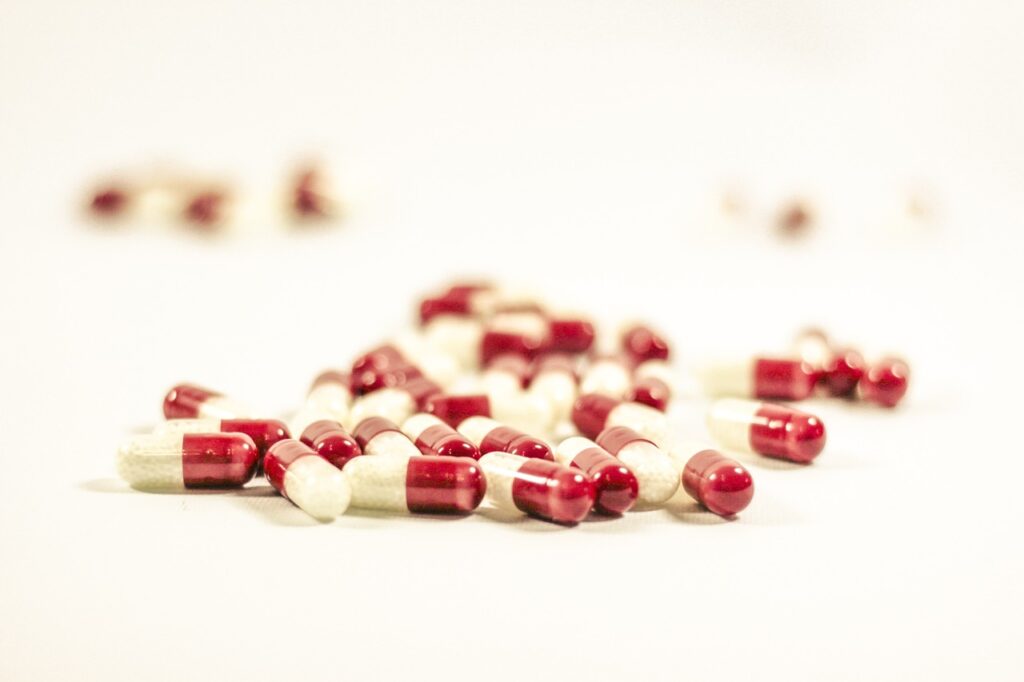
The COVID-19 pandemic is on everyone’s mind right now. However, there’s another medical crisis looming that may be far more dangerous and consequential for decades to come. Scientists have been warning for years that microbes are becoming resistant to even the strongest antibiotics we throw at them. According to a new study, our silver lining might lie in the chemical synthesis of antibiotics that neutralize microbial adaptations.
Revisiting shelved antibiotics
After Alexander Fleming’s discovery of penicillin in 1928, the world entered the golden age of antibiotics. Within a remarkably small timeframe, the wide-scale adoption of antibiotics post-WWII changed the leading cause of death in the United States from communicable diseases to non-communicable diseases (cardiovascular disease, cancer, and stroke), and raised the average life expectancy at birth from 48 years to 78.8 years.
But microbes haven’t stayed idle. Some bacteria developed proteins or other molecules that allow them to multiply despite the presence of antibiotics. When such adaptations occur in a population, they quickly proliferate. This is why tens of thousands of preventable deaths occur each year due to drug-resistant strains of common bacteria like Staphylococcus aureus and Enterococcus faecium.
Until not too long ago, streptogramins, a class of antibiotics, used to be very effective against S. aureus infections. But then the bacteria started to produce proteins called virginiamycin acetyltransferases (Vats), which recognize streptogramins and will chemically deactivate these drugs before they can bind to the cell’s ribosome. This is why streptogramins are considered to be useless in many cases, especially for hospital-acquired bacterial infections.
But we shouldn’t cross out streptogramins just yet. Like most antibiotics, streptogramins are derived from naturally occurring compounds produced by other bacteria, which are later tweaked for optimized performance in the human body.
Assembling antibiotics like LEGO bricks
Researchers at the University of California San Francisco employed a different approach to antibiotic production, which enabled them to synthesize streptogramins that can overcome the resistance conferred by Vat enzymes.
However, the scientists didn’t create new antibiotics from scratch. That would be too time-consuming, expensive, and prone to failure. Instead, the team led by Ian Seiple, an assistant professor in the UCSF School of Pharmacy’s Department of Pharmaceutical Chemistry and the Cardiovascular Research Institute (CVRI), took a modular approach, redesigning existing streptogramins by altering and joining together precursor molecules like LEGO pieces. The resulting “rebuilds” of existing drugs blocked Vats from deactivating the antibiotics.
“The aim is to revive classes of drugs that haven’t been able to achieve their full potential, especially those already shown to be safe in humans,” said Seiple in a statement. “If we can do that, it eliminates the need to continually come up with new classes of drugs that can outdo resistant bacteria. Redesigning existing drugs could be a vital tool in this effort.”
“This system allows us to manipulate the building blocks in ways that wouldn’t be possible in nature,” added the researcher, who is the lead author of the new study published today in the journal Nature . “It gives us an efficient route to re-engineering these molecules from scratch, and we have a lot more latitude to be creative with how we modify the structures.”
In order to determine which LEGO bricks they would have to modify, the researchers employed cryo-electron microscopy and x-ray crystallography to create three-dimensional pictures of the drug at near-atomic resolution. They also modeled the bacterial ribosome and the Vat protein. This way, the researchers could isolate molecules that are essential to antibiotic function.
The team of researchers found that two of the seven building blocks for streptogramins were promising targets for chemical modification. After tweaking these regions, the researchers came up with a new promising candidate against streptogramin-resistant S. aureus. Experiments on mice showed that the antibiotic was over 10 times more effective than classical streptogramins.
According to Seiple, the same approach can be applied to other classes of antibiotics that have been shelved due to microbial resistance.
“We learned about mechanisms that other classes of antibiotics use to bind to the same target,” he said. “In addition, we established a workflow for using chemistry to overcome resistance to antibiotics that haven’t reached their potential.”
“It’s a never-ending arms race with bacteria,” said James Fraser, a professor in the School of Pharmacy’s Department of Bioengineering and Therapeutic Sciences in the UCSF School of Pharmacy. “But by studying the structures involved— before resistance arises—we can get an idea of what the potential resistance mechanisms will be. That insight will be a guide to making antibiotics that bacteria can’t resist.”






